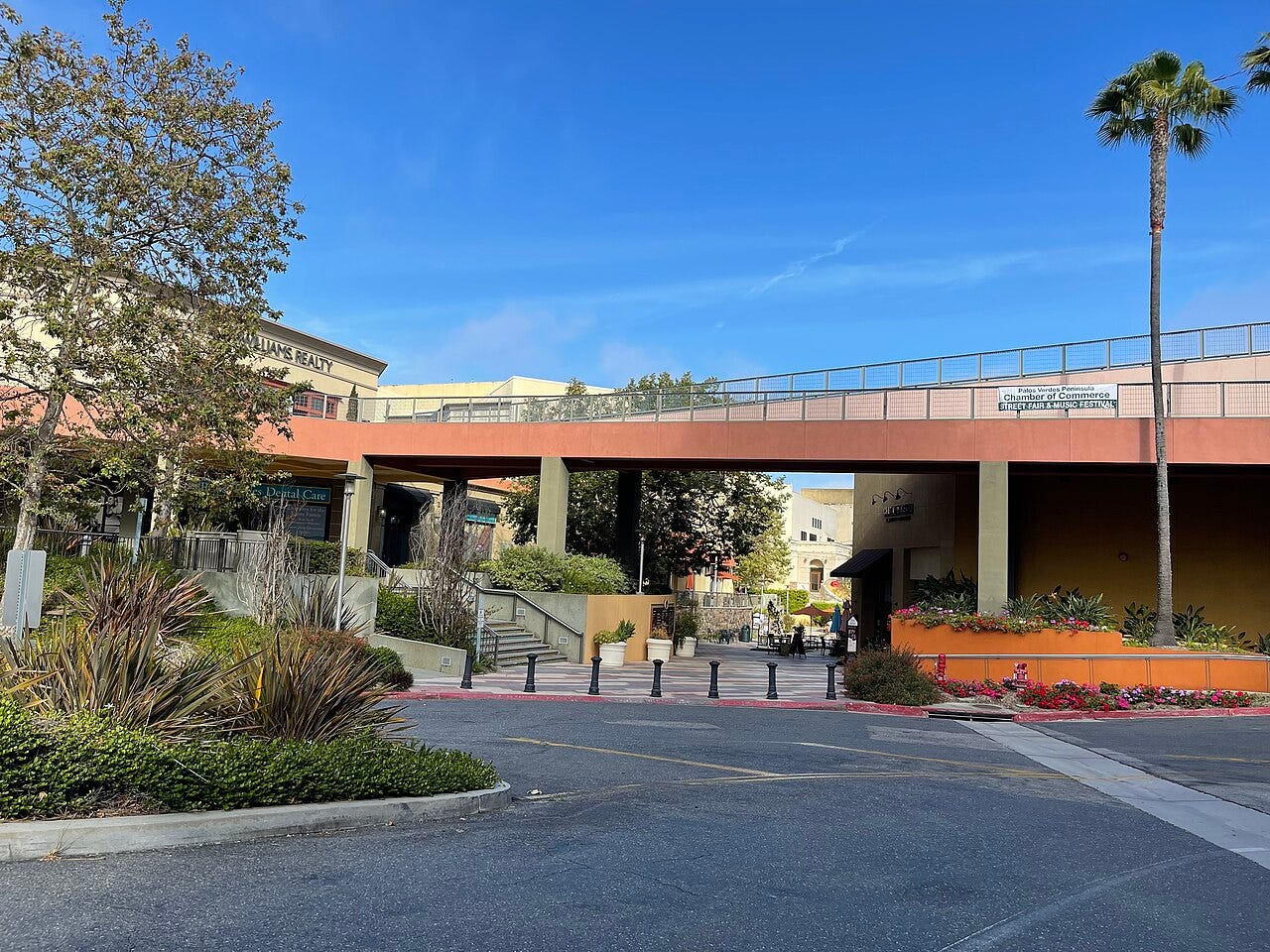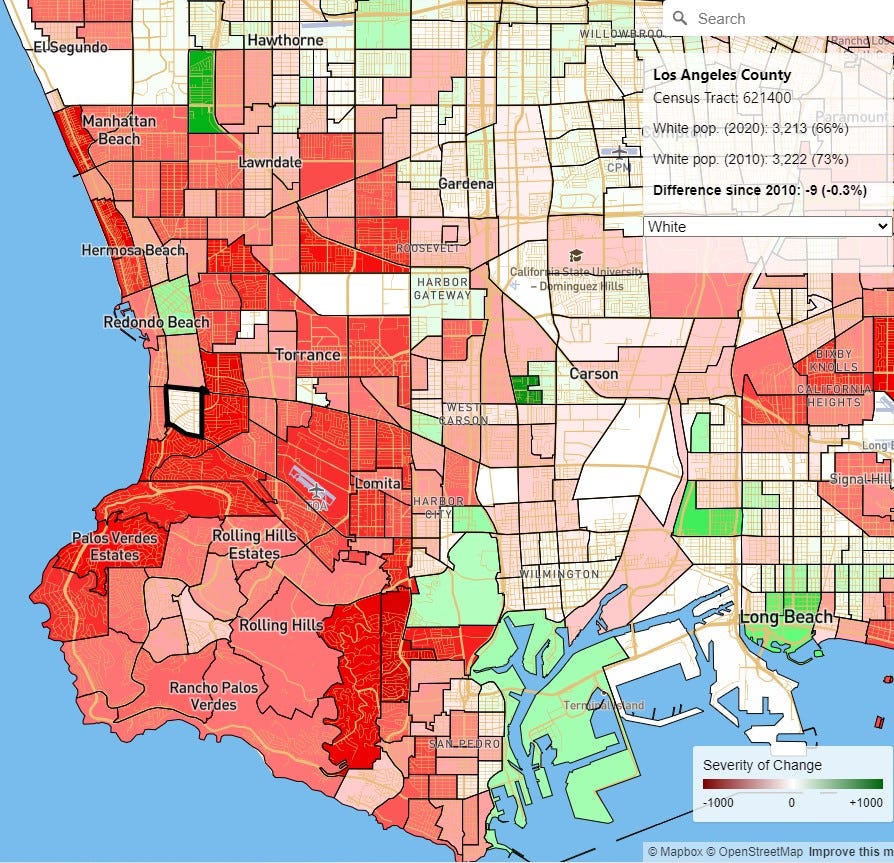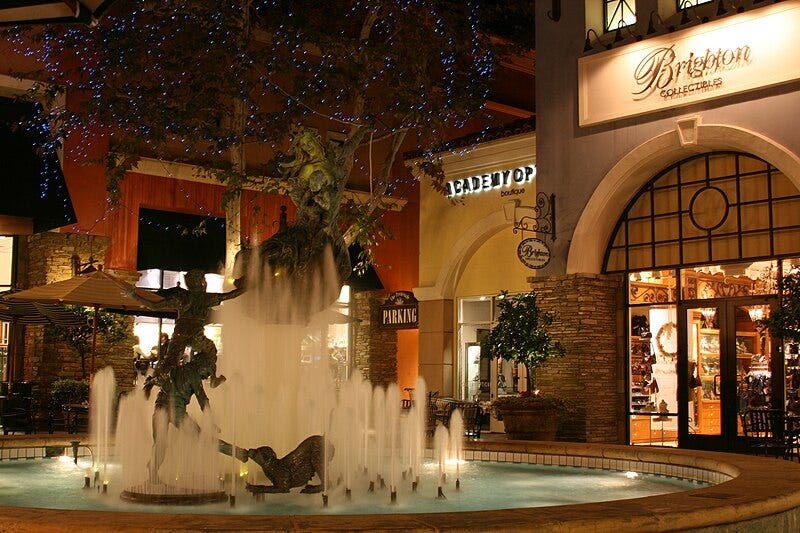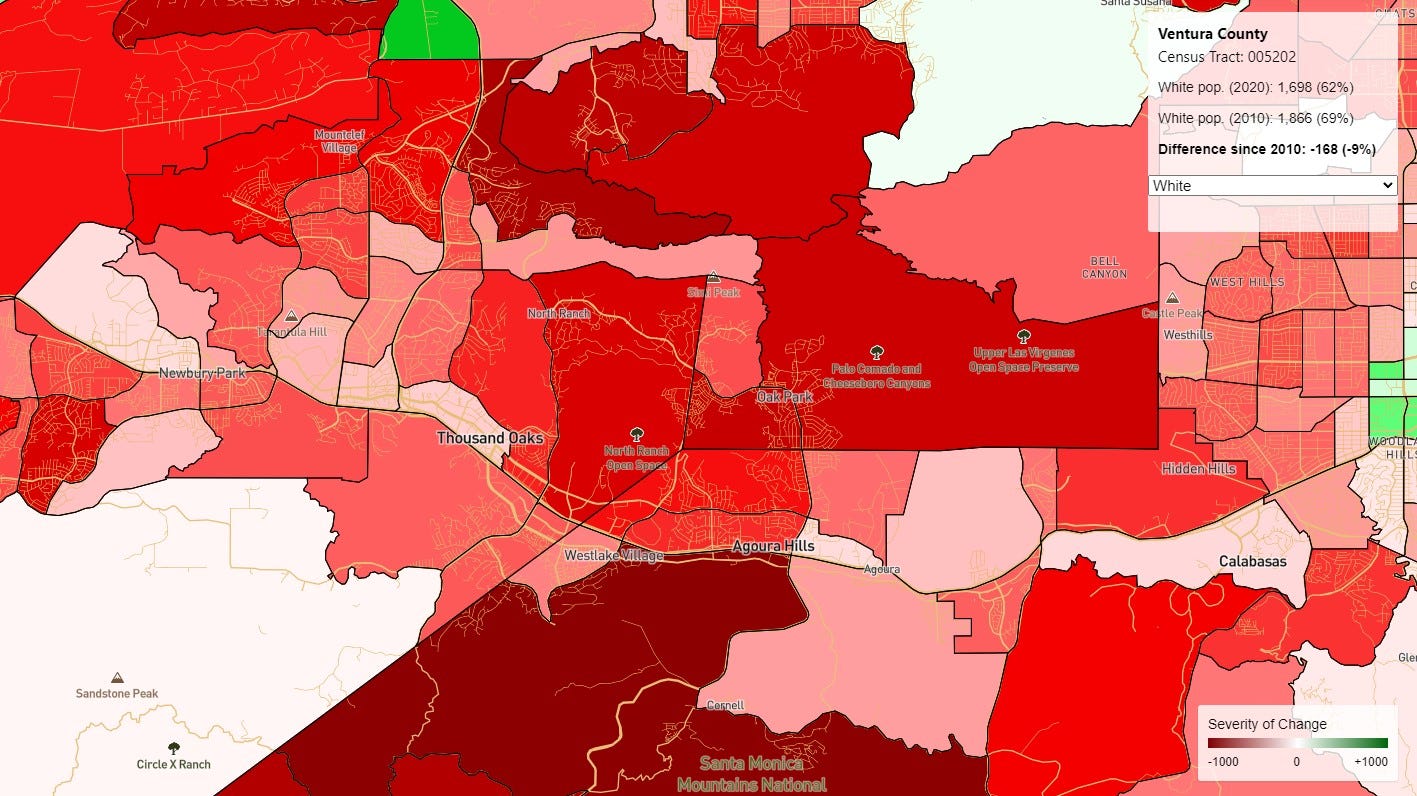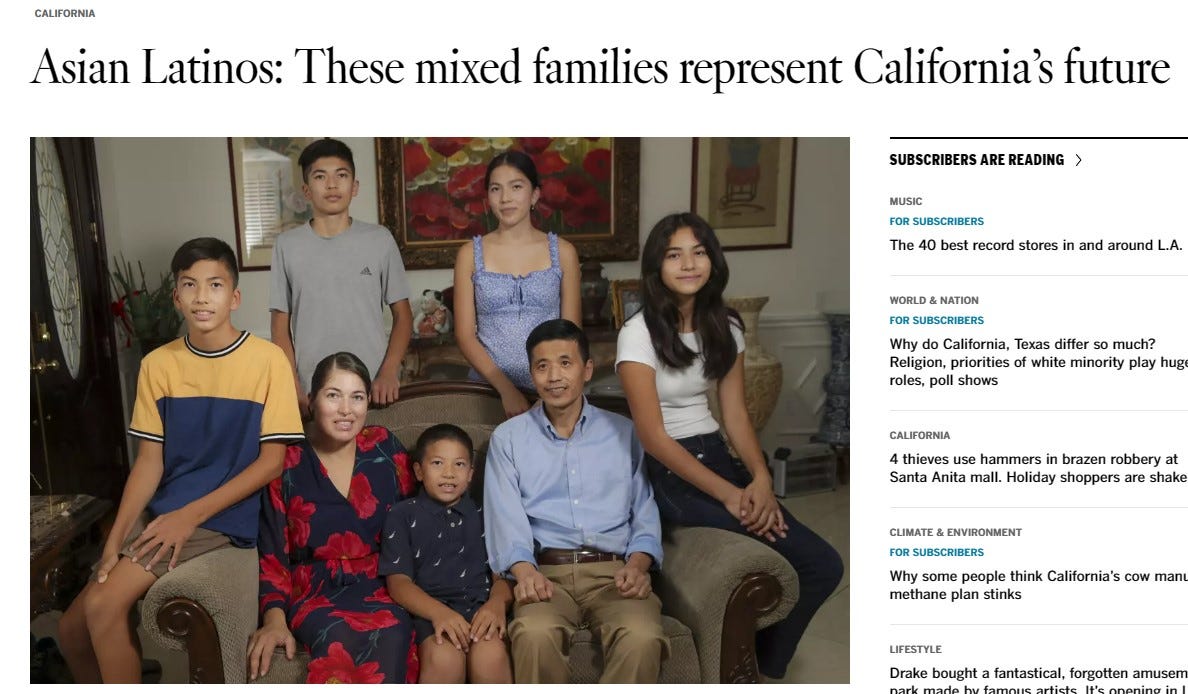Del Amo Fashion Center
source: Wikipedia
My trip to the LA metro last weekend involved visiting various malls. Despite the hype of dying malls, Southern California still has a thriving mall culture. Del Amo Mall in Torrance is super diverse with Whites, Latinos, Asians, and Blacks, all well represented. Del Amo is one of the largest malls in California and attracts visitors from all over the South Bay region and beyond. In contrast with the trend of enclavism in California that I discuss, I noticed many multiracial friend groups and interracial couples, varying from White males with Asian females and Latinas to Latino males with White females to Black males with Latinas and Asian females.
Del Amo Mall is broadly middle class coded, though there is a class convergence from upper middle class to a more ghetto clientele. Del Amo Mall instated a curfew requiring all minors to have adult supervision, in response to Black teenagers rioting, and I noticed a police presence. Upper middle to upper class Whites are generally not interested in indoor malls, and malls in California are very POC coded. The exception is outdoor upscale malls, such as those built by Rick Caruso.
Torrance is emerging as a pan-Asian enclave with an old Japanese community, Koreans who moved in in the 90s in response to the LA riots, some Chinese and Taiwanese, and more recently Indians and Pakistanis. There are also a lot of middle class Hispanics. Torrance is 35.3% White, 35.26% Asian, and 19.09% Hispanic. Torrance used to be much more White, with the White population declining from 52.36% in 2000 to 35.3% today.
Promenade on the Peninsula
source: wikipedia
I visited another mall nearby, the Promenade on the Peninsula in Rolling Hills Estates/Palos Verdes, which is much smaller and more upscale than Del Amo. In contrast with Del Amo, which was packed with crowds, the Promenade on the Peninsula was deserted. Keep in mind this was a Friday late afternoon. It could just be that that particular mall is dying out. While Palos Verdes is one of the most affluent communities in California, my impression is that the White population is very geriatric, with a big decline in family formation, and has also attracted a lot more wealthy Asians. Palos Verdes is literally sinking into the Sea, which I guess is symbolic.
South Bay White Population Change (2010-2020)
Source: Darrell Owens’s blog via Census data
While the South Bay was traditionally a White Flight suburb, there was a big decline in the White population, starting with the decline in the aerospace industry at the end of the Cold War. Recently the South Bay has emerged as Silicon Beach, which is attracting more Asians. Torrance and the South Bay generally have good schools and are desirable places to live, which shows the diversity of upward mobility in California.
My observation is that Torrance and Palos Verdes have experienced the biggest White decline while Redondo Beach, Hermosa Beach, and Manhattan Beach are still very White. Manhattan Beach, which has traditionally been an upper middle class Anglo community has recently attracted a lot of affluent Jewish transplants from the Westside of LA, and overall a lot of new money from all over, due to becoming famous from reality TV shows like Selling Sunset.
Promenade at Westlake
source: wikimedia
I also visited the Rick Caruso built Promenade at Westlake, on the border of Thousand Oaks and Westlake Village, an area known as the Conejo Valley. The South Bay and the Conejo Valley are the LA Metro’s two main upper middle to upper class suburbs. In contrast with the South Bay, including very wealthy Palos Verdes, the White demographic seems to be thriving. I noticed tons of White families and White teens at the mall. However, the census shows the region still experienced a White decline, albeit much less severe than other parts of SoCal.
Conejo Valley White Population Change (2010-2020)
Source: Darrell Owens’s blog via Census data
The Conejo Valley became popular in the 1980s as a White Flight suburb in response to school bussing and demographic change in the San Fernando Valley. Today it attracts affluent people from all over SoCal. It has a reputation for being very nouveau riche and status-conscious but also very family-oriented. Part of what makes the Conejo Valley desirable to the affluent is how geographically isolated it is from all the problems of LA but within distance to commute.
Young affluent coded women from Westlake Village resemble the actress Halston Sage
The Conejo Valley is broadly Caucasian, including Anglos, Jews, and Persians, as well as some Asians. Of the Conejo Valley cities, Calabasas and Agoura Hills are more Jewish, while Thousand Oaks and Newbery Park are more Waspy, with Westlake Village probably somewhere in between. The area has one of the highest concentrations of attractive young women in SoCal. In particular, I noticed a lot of stunningly attractive blonde half-Jewish women. There is an ethnogenesis between Anglos and Ashkenazi Jews while Persian Jews don’t mix much.
One reason this area has stayed very White is that it hasn’t attracted tons of Asians like other upper middle class California suburbs, like the South Bay and Orange County. A Princeton Economics study found that when Asian enrollment increases in upper middle class suburbs, the White population declines. Another reason the White demographic could be stronger is that there are a lot more Jews, and Jews tend to stay in areas that have strong Jewish communities, while Anglos are more likely to relocate. However, I also noticed lots of blonde Waspy looking families and Zoomers with crucifixes.
In my earlier articles, I tried too hard to push an agenda of enclavism for California rather than just analyze demographics. The future I envision for California is both enclavism emerging but also places that are more diverse and integrated. The main distinction is by class, with White enclavism emerging from class based “segregation” while I expect California’s middle class to become more racially blended. Also, I expect different ethnogenesis to form based on specific geographic locations. For instance, I foresee Hapa/Eurasian enclaves, Castizo (White and Latino) enclaves, Asian/Latino enclaves, or California’s middle class becoming a broader ethnogenesis of White, Asian, and Latino.


